Compared with traditional split air condtitioners, whether central air conditioners are good or not for home use is a ongoing hot topic online. Either on major search engines Google or Bing, or on home appliances forums, people are always tireless in the pursuit of the answer.
It is an indisputable fact that air conditioning has been changing from traditional split type, cabinet type and wall mounted type to family central air conditioner. It is not so much a family change in the history of air conditioning as a transformation of the times.
As the summer of 2021 is approaching, we will compare several mainstream brands of central air conditioners as a reference for this summer's decoration.

Figure 1: A woman is pressing on the control pad of central air conditioner in the living room.
1.Market share
1.1 Trane
As of 2021, Trane air conditioner has the largest market share in the United States.
The brand of Trane central air conditioning for home use was born at the beginning of last century. After a century of development, the achievements of Trane central air conditioner are obvious to all. In 2019, with a sales volume of 5.89 billion USD, it ranked the third across the world. At present, as a high-end central air conditioning brand, Trane has become one of the world's largest manufacturers of air conditioning equipment.
At present, Trane is the world's largest supplier of heating, ventilation & air conditioning (HVAC) and building automation management systems. Every 24 hours a day, every minute, somewhere in the world, there is a Trane air conditioner installed. Trane has become one of the most famous central air conditioning brands in the world, with a brand value of 10 billion US dollars.
Trane mainly provides small household air conditioners and large water chillers. The water system of Trane central air conditioner is known as the best brand in the industry and has a market share of 16% in the mature American market based on 951 customers’ votes on PickHVAC.
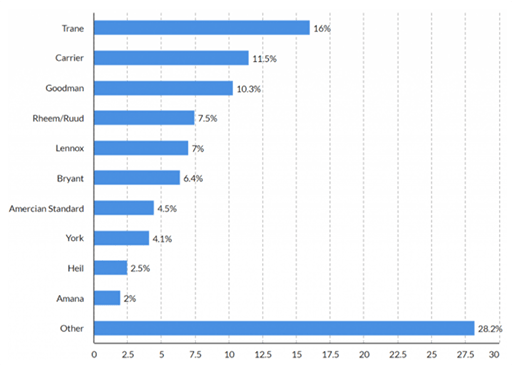
Figure 2: Market share of local top air conditioner brands in the US in 2020. (Source from: https://www.pickhvac.com)
1.2 Daikin
With the critical COVID-19 epidemic going on, market analysis report of central air conditioning industry in 2019 was released, and it added a shadow to the industry.
"Electromechanical Information - Central Air Conditioning Market" shows that under the combined influence of many factors, the annual central air conditioning market fell by 3.61% compared with last year, ending the growth trend lasted for many years.
Despite the poor market environment, Daikin, as the pioneer of household central air conditioning, still had an excellent market share of 23.15% in multi-split air conditioning marketplace as an overseas brand.
To analyze the reason, it's partly because that Daikin is the industry pioneer for long, but more importantly, Daikin has always been adjusting its pace according to the changing market competition.
The figure below shows the brand rank of global central air conditioner market share outside of the U.S. market.
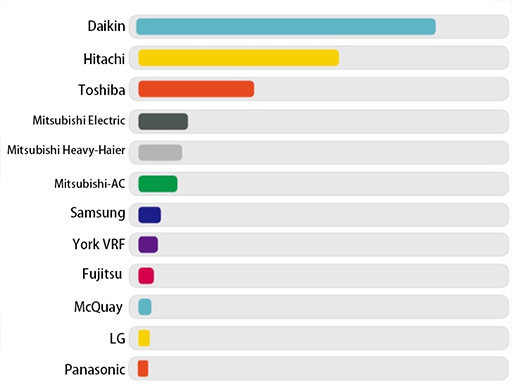
Figure 3: Brand market share of central air conditioners outside of the U.S.
In various industry reports published one after another, Daikin is firmly in the No.1 place in multi-split air conditioning market, and its market scale far exceeds that of other brands.
As a company with nearly 292 production factories and subsidiaries all over the world, the overseas sales accounts for more than 70% of the total sales of Daikin.
Daikin is taking Japan, Europe, China, Southeast Asia, North America, etc. as the axis to develop its business, and is actively exploring the markets of emerging countries. According to different characteristics of countries and regions in the world, Daikin is carrying out localized operations in line with local development, striving to be able to cooperate with local enterprises and governments. Its aim is to become a global enterprise with sustainable social development.
1.3 Mitsubishi
Mitsubishi takes a multi brand strategy, with its three sub brands: Mitsubishi Electric, Mitsubishi Heavy Industries-Haier and Mitsubishi Heavy Industries-Air Conditioner occupying three positions in the sales ranking.
In fact, the market share of the 3 Mitsubishi brands in total has exceeded that of Toshiba, which occupies the third place.
Looking at the global market, Mitsubishi Electric is the boss of the central air conditioning industry.
Seeing its influence and sales worldwide, Mitsubishi Electric is the No.1 international brand. Its markets include Japan, Europe, America and all the rest countries in the world. Without any doubt, we can say that Mitsubishi focuses on the whole world.
In the Asian market with a huge user base, Mitsubishi Heavy Industries-Haier has launched the residential air health solution, and its leading technologies and products are highly sought after by consumers. At the same time, in terms of engineering projects, Mitsubishi Heavy Industries-Haier signed strategic agreements with well-known real estate developers, further enhancing its market share in the real estate field.
1.4 Carrier
Carrier is the world's largest supplier of HVAC and refrigeration equipment. The founder of Carrier company, Dr. Carrier, developed the first air conditioner in 1902. He is recognized as the father of air conditioner in the world. The company later invented the world's first home air conditioner in 1926 and the first home central air conditioner in 1952.
In 1911, Carrier invented the principle of Temperature and Humidity, namely "Enthalpy Humidity Diagram", which is still widely used in college textbooks.
In different historical periods, skyscrapers and other large buildings and household air conditioners are all provided by Carrier. Many buildings around you, such as airports and subways, are mostly installed with Carrier air conditioners.
In North America, Carrier central air conditioners and Trane central air conditioners usually take either NO1. or NO2. in the marketplace, repeated in turns over the past years.
The statistics on PickHVAC clearly illuminated the brand power of Carrier.
“38.4% of the market share is owned by two companies, Ingersoll-Rand (20.5%), parent company of Trane and American Standard, and Carrier (17.9%), which produces Carrier and Bryant HVAC equipment."
Source from https://www.pickhvac.com/residential-hvac-statistics
2.Brand history
Brand is the soul and lifeline of an enterprise. It is forged through the unremitting efforts of several generations. It is a core indicator of whether an enterprise can win and develop continuously, so is the brand of household central air conditioners.
2.1 Trane
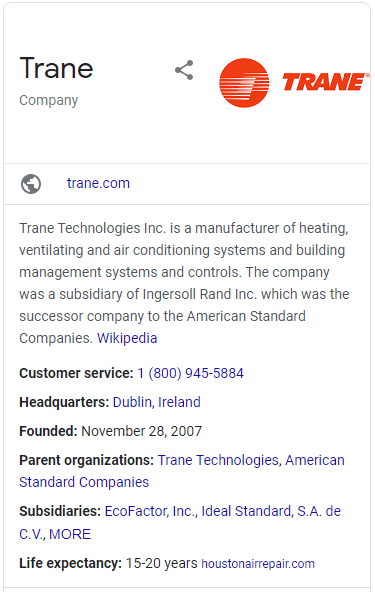
Figure 4: Company profile of Trane on Google My Business.
Trane is the world's leading provider of indoor comfort systems and combined HVAC solutions, headquartered in Wisconsin, USA.
Since its establishment in 1913, it has been committed to providing customers with efficient and energy-saving heating, ventilation and refrigeration air-conditioning systems, services and spare parts, as well as advanced building automation and financial solutions.
Trane has branches in more than 100 countries, 29 production factories around the world and more than 29000 employees. As a member of Ingersoll Rand Group (IR), Trane's philosophy is to create and continuously provide a safe, comfortable and efficient environment for the world.
2.2 Daikin

Figure 5: Company profile of Dainkin on Google My Business.
Since its start in 1924, Daikin has been growing and developing, and now has more than 90 branches in Japan, mainland China, Chinese mainland Taiwan, Australia, Southeast Asia, Europe and North America.
Daikin group has become a multinational enterprise active in air conditioning, refrigeration, fluorine chemistry, electronics, hydraulic machinery and other fields. In particular, it has developed and sold more than 5000 kinds of refrigeration compressors and air conditioners in the world. The market share of its products in Japan has always been the first.
Today, Daikin has set up more than 200 production factories and sales companies in the world, with more than 41000 employees. The group is marching towards globalization with unprecedented speed.
2.3 Mitsubishi
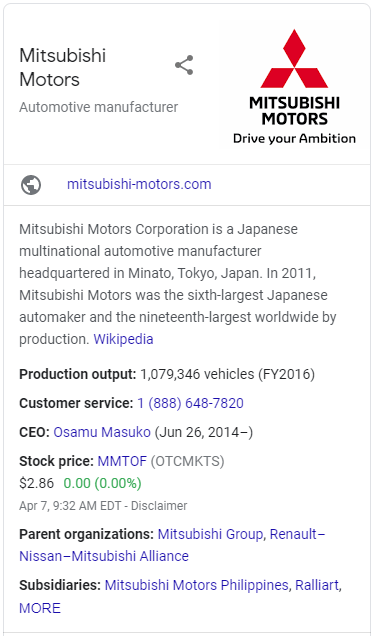
Figure 6: Company profile of Mitsubishi on Google My Business.
Mitsubishi group is a loose entity composed of the companies after the disintegration of the former Japanese Mitsubishi financial magnate. In the name of Mitsubishi, “mitsu" means "three" and “bishi" means "water chestnut".
Mitsubishi is not a single company. It is a group of many independent companies. Most of them use the name "Mitsubishi", but will not simply call themselves "Mitsubishi".
There are 28 core members of Mitsubishi Kinyokai (also known as Friday Club), about 500 member companies of Mitsubishi, about 400 companies with "Mitsubishi" in their names, and hundreds of companies without "Mitsubishi" in their names. The business activities of these companies are independent and even compete with each other in many fields.
These companies originated from a shipping company operated by Yataro Iwasaki in 1870, and then itbegan to set foot in mining, ship building, banking and insurance, which laid a solid foundation for the growth and development of Mitsubishi in the future. While it is worth noticing that Mitsubishi Pencil is not a member of Mitsubishi.
The above two paragraphs are compiled from the official website of Mitsubishi.
2.4 Carrier
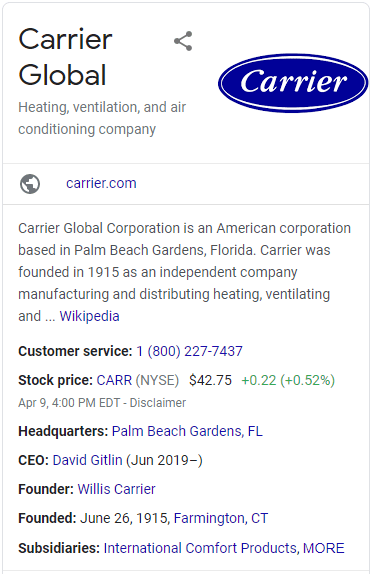
Figure 7: Company profile of Carrier on Google My Business.
In 1902, when Dr. Willis Carrier invented the world's first scientific air conditioning system, he created a revolutionary industry and changed people's way of life, work and entertainment.
By providing advanced HVAC products and high-quality service to customers, Carrier has developed into a global enterprise with business in 172 countries on 6 continents.
The company Carrier, founded by Dr. Willis Carrier, the inventor of modern air conditioning, is a global supplier of high-tech HVAC and refrigeration solutions. Carrier experts bring together energy-efficient products as well as building automation and energy services to provide sustainable solutions for residential, commercial, retail, industrial, cold chain, transportation and food service customers.
3.Performance
Central air conditioning system can be divided into water system and fluorine system, and each system has its own advantages.
Trane household central air conditioner belongs to water system, for it uses water as the refrigerant. On the other hand, the most well-known brand of fluorine system (which uses Freon as the refrigerant) is Daikin in Japan.
To choose whether water machine or fluorine machine depends on your house area.
It is recommended to use Carrier air conditioner of water system and combined power supply for buildings with an area of more than 200 square meters or a house with more than one floor. For flats smaller than 200 square meters, it is recommended to choose air conditioner of fluorine system.
Now let's take a look at the comparison between central air conditioner of water system and fluorine system.
3.1 Trane
Trane central air conditioners are also divided into two categories: water system and fluorine system. But its most famous type is central air conditioner of water system.
The most prominent characteristic of water system is its comfort, which is suitable for large public areas, business areas and high-end residential buildings. In the field of home use, Greenergy, the central air conditioning system of Trane, once became the preferred brand of air conditioning system for family houses and small office areas.
Besides its multi-split central air conditioners, Trane’s water machines and air duct machines also sell good in the market. In particular, Trane’s three-stage centrifugal compressor has always been the most energy-efficient one in the industry, though its price is quite high compared with other brand choices.
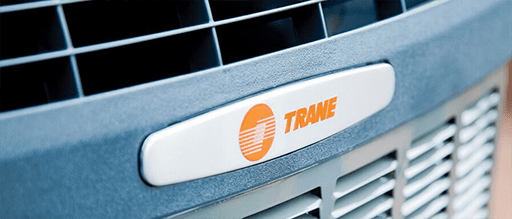
Figure 8: A close-up view of Trane central air conditioner
* Energy Efficiency Ratio
Air conditioning energy efficiency means the energy efficiency ratio (EER) of the cooling capacity of household air conditioners, which is the ratio of rated cooling capacity and rated power consumption.
In addition, since most air conditioners are capable of cooling and heating, there’s also a concept of COP, which refers to the ratio of rated heating capacity to rated power.
You can see from the term definitions that higher EER and COP mean that the air conditioner has better capacities of cooling and heating.
Generally, it is cost-effective to install fluorine system for small houses, and water system is suitable for large houses. For water system installed for large houses, the more and for longer time you use, the more energy-saving it is.
* Comfort
Water system will be better in the perspective of comfort, since water is not easy to lose. If you use an air conditioner of fluorine system for a long period of time, the indoor air will be dry.
As water runs in the pipelines of an water based air conditioner, the air conditioner will not absorb the water in the air. This is the difference between water based air conditioners and fluorine based air conditioners. The temperature difference of water system is small.
Comfort is the biggest advantage of Trane central air conditioning water system, which is very suitable for high-end places and large apartments.
* Durability
The service life of fluorine based air conditioner is expected to be 15 years, and that o water based air conditioner is 20 years.
* Energy Conservation
There are two compressors in Trane water based central air conditioners of 5P and above. If you just turn on part of the indoor units during use, only one compressor will work, so as to save the energy.
In terms of energy consumption of outdoor units, high efficiency plate heat exchanger is adopted in Trane central air conditioner, which can save 10-14% of power compared with other competitors. For example, the input power of 21kw (8 HP) model is 6.76kw.
* Cooling & Heating Capacity
The temperature rise of fluorine system is very fast, but that of water system is slow.
There are two or more compressors in the water system. When the weather is very cold, one can defrost and the other can start normally.
You may further ask, are there any other benefits of water system? Of course there are. When one compressor goes wrong, the other can start normally, it means part of the air conditioner can still be used.
Pursuit for comfort is the mission of Trane central air conditioning system, which is particularly excellent in efficiency and energy saving, suitable for large apartment or high-end decoration.
3.2 Dainkin
In the future, variable frequency air conditioner will still be the leading role in the air conditioning industry. The technology of multi-split air conditoners of variable frequency originated in Japan, and the representative brand is Daikin.
As an air conditioning manufacturer for nearly a century, Daikin inverter air conditioning technology has been the most advanced in the world, making it win the reputation of "Father of inverter in the world" in the air conditioning industry.
As the No.1 central air-conditioning brand in the world, Daikin once became the leader of domestic household central air conditioning industry in Japan with its good quality and excellent service. It is an indispensable air-conditioning manufacturer for building comfortable environment in household and small commercial space.

Figure 9: A close-up view of Daikin central air conditioner
* Energy Efficiency Ratio
The energy efficiency ratio (IPLV value) of Daikin air conditioner ranges from 5.5 to 7.5, and there is a difference according to the number of pieces and series.
The highest energy efficiency ratio (EER) is 7.5 for Daikin air conditioners of 14-16 HP. the commonly used one is about 6.3, which is far higher than the national standard for EER Level I - 3.6.
* Comfort
Daikin air conditioner features advanced mute technology, which can make the sound of indoor unit only 27 dB, so that users can get the most quiet environment with air conditioner working.
Daikin air conditioner has developed a swing compressor, which achieves the proportion control of wind speed and can inhibit the friction of parts, making the operation of the air conditioner more stable. The technology also makes the compressor vibrate less and reduces the friction times of components, so that the operation of the air conditioner can be more stable and quiet.
Daikin household central air conditioner has a variety of control systems for you to easily operate.
The design of washable filter makes maintenance very convenient. Wired remote control, wireless remote control, unified switch, centralized remote control and other control systems enjoy your indoor life the way as you wish. You can control the temperature of each room individually, which is convenient to use. And the system is easy to maintain, all you need to do is to clean the filter regularly.
* Durability
The life of general Daikin air conditioner is between 8-15 years. It also depends on the usage habit, installation quality and the quality of air conditioner itself.
* Energy Conservation
Daikin central air conditioner has the function of frequency conversion, and its power consumption is slightly lower than other central air conditioners.
Taking a 7.1kw Daikin central air conditioner as an example, the power consumption of the 7.1kw Daikin internal units is 152w, which can be ignored. Therefore, when a 3P internal unit (cooling capacity is 7.1kw) is turned on, its power consumption is about 2 kwh per hour. When it reaches the set temperature, it will operate at low speed and low energy consumption mode to ensure the stability of the environment temperature and improve energy consumption Efficiency ratio (20% - 30% energy saving than conventional air conditioners).
* Cooling & Heating Capacity
In order to keep its beautiful appearance, Daikin has reduced the depth of the original machine to match the beautiful appearance of decoration. But by doing this, it has replaced the original large motor with a smaller one. The actual motor size is just as small as a traditional split one.
In fact, the power of the motor is not enough. There are only two gears of static pressure. The wind is weak and the hot air rises in winter, which has always been Daikin's bug, making it inferior to Mitsubishi in terms of heating capacity in winter.
3.3 Mitsubishi
Whether an air conditioner is good or not can be judged from its heating capacity, since all central air conditioners has similarly outstanding cooling capacity. Japanese air conditioners generally don't have electric heating, which saves electricity and is safe, but it also tests the heat capacity in winter.

Figure 10: A close-up view of Mitsubishi central air conditioner
* Energy Efficiency Ratio
The energy efficiency ratio of central air conditioning has exceeded that of ordinary air conditioners, such as cabinet air conditioners and split air conditioners. Under the same air conditioning temperature, the power consumption of central air conditioning is lower than that of ordinary cabinet type and split type. The energy efficiency ratio of ordinary household air conditioners is about 2.3 ~ 2.8, while that of central air conditioners is more than 3.0.
Full DC variable frequency compressor is used in Mitsubishi central air conditioner, so that the performance index of refrigeration can reach 4.75, exceeding the national first-class energy-saving standard, making the air conditioning system operate with high efficiency and energy saving.
In addition, if you use wall mounted furnace, or ground source heat pump together with Mitsubishi central air conditioner, its energy efficiency ratio can be improved to be more than 5, which is also an indicator of how good the energy saving effect Mitsubishi central air conditioners can achieve.
* Comfort
The appearance design of Mitsubishi air conditioner is fashionable, with luxury and rich color choices. The general performance of Mitsubishi air conditioner is excellent, and the cooling speed is very fast, which together making the use experience of Mitsubishi central air conditioner very comfortable.
These are inseparable from Mitsubishi's core compressor technology. Mitsubishi air conditioner is also attentive in humanized functions. In fact, most of them are seemingly insignificant designs, but they can bring users a new experience.
* Durability
The service life of household split air conditioners (wall mounted and cabinet mounted) is 5-8 years, while that of household central air conditioners is 15-20 years. Among them, the service life of Mitsubishi central air conditioners is 25 years. If it is the type of ground source heat pump, its service life can be 50 years.
* Energy Conservation
For residential buildings with several rooms, Mitsubishi Heavy Industries’ household central air conditioner generally saves about 30% electricity than household split air conditioner, And the longer the service cycle is, the more obvious the effect of energy saving.
* Cooling & Heating Capacity
Mitsubishi Electric's commercial air conditioners are divided into two series, 100% imported series Ice Flame and 90% imported series City. "Ice flame" is generally used by people who pursue quality in high-end areas, which adopts the world's top air conditioning technology at present.
In winter, the hot air will float up in the air, and people feel cold. Mitsubishi Electric air conditioner has a 4-gear static pressure and under the action of static pressure, three motors in the ultra-thin internal units can blow the wind far away, which can bring down the hot air pressure, making the heating performance is strong.
In summer, the machine has a built-in lifting water pump, and the condensate water is automatically discharged.
Mitsubishi air conditioners can work at a temperature of - 15 degrees without attenuation heating and noise. The machine doesn't need floor heating, and you can’t even notice the defrosting time. It's hot as soon as it's opened.
Whether the air conditioner is good or not hugely depends on heating. In winter, 30% of the compressor's energy is used for defrosting, but the heating capacity is still good, which is a test of Mitsubishi’s performance.
To meet the demands of home users of central air conditioners, Mitsubishi features its Power Multi series.
You just need to install 1 outdoor unit, and it supplies all indoor units in the air conditioning system with cooling and heating capacity, making it cost-effective.
Mitsubishi’s variable frequency scroll compressor with low pressure chamber is 100% imported from Japan. In villas and other similar projects, 90% of the air conditioners are City series imported from Japan with the world's top compressor "Ice Flame". There are basically no machines in the market that are ahead of Ice Flame in terms of technology.
If you are interested to learn more about Mitsubishi Power Multi, check our another detailed comparison between the 2 Japanese air conditioner brands, Mitsubishi and Daikin.
Top Series Comparison of Mitsubishi Power Multi and Daikin VRV Central Air Conditioners for Home Use
3.4 Carrier
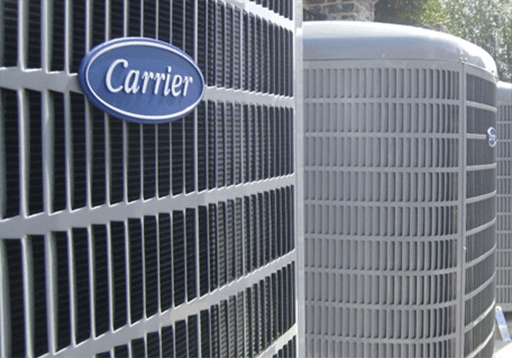
Figure 11: A close-up view of outdoor unit of Carrier central air conditioner.
* Energy Efficiency Ratio
EER:2.93
COP:2.94
Carrier has reached the first class of energy efficiency and is a relatively energy-saving product.
The energy efficiency IPLV of Carrier household central air conditioner is 6.3, which is far beyond the national first class standard. The advantage is that it saves electricity and does not cost you much money.
Carrier's central air conditioner is outstanding in energy efficiency. In fact the energy efficiency of most of the air conditioner brands are less than 6.0. In this aspect, Carrier is a good choice when purchasing central air conditioner.
* Comfort
Carrier’s control accuracy of indoor temperature is ± 0.5 ℃, and the humidity detection accuracy is ± 5%. In winter, heating can be carried out without shutdown, and defrosting can be carried out by outdoor units in sequence. There is no risk of indoor refrigerant leakage.
Carrier can produce 100% fresh air, only 25% of the cost of traditional ventilation. Furthermore, it can provide fresh air on demand to control the concentration of carbon dioxide in the room.
* Durability
Carrier is the only air conditioning brand in the world with a service life of 30 years.
* Energy Conservation
Variable water flow and variable evaporation temperature control technology is adopted in energy saving and air-cooled outdoor units (ODU).
The integrated partial load coefficient of performance (IPLV) of Carrier air conditioning system is 40% higher than that of the traditional liquid circulation heating system, and 10% higher than that of VRF.
* Cooling & Heating Capacity
With a new high-efficiency centrifugal compressor which has filled the technology blank in the international air conditioning industry, Carrier central air conditioner can save energy more efficiently.
The intelligent defrosting technology of Carrier greatly improves the comfort performance of its air conditioners, and makes the heating capacity of its air conditioners 30% higher than that of the traditional air conditioners.
On the basis of intelligent defrosting, not only the heating performance of Carrier air conditioners is improved, but also the energy-saving feature is enhanced.
4.Installation
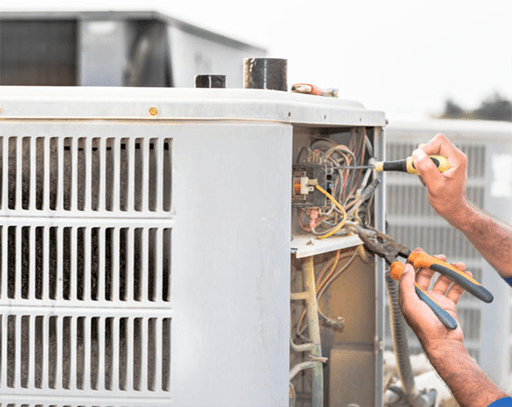
Figure 12: Central air conditioner installed by a professional worker.
Central air conditioning is composed of an outdoor unit and several indoor units. You should find a dry and fixed position to place the outdoor unit outside of your house. However, the installation of a central air conditioner is more than that.
You need to have the central air conditioner installed when the hard decoration stage just starts, and the indoor units need to be embedded in the ceiling.
Because the indoor units of central air conditioner are equipped with pipes and need to be hidden in the ceiling, when you design ceiling modeling in the plane scheme for your home, you should consider the location of the indoor units of air conditioner in the whole decoration scheme and the layout direction of the pipes.
This requires the designer to have basic knowledge of central air conditioning and HVAC, which will help a lot to coordinate the design of different equipment, and make sure there won’t be conflicts in construction and equipment installation.
Even if your design is finalized and the device site is chosen, you are not supposed to stay too assured.
Before the construction and installation, the person in charge of the air conditioning installation, the designer, the person in charge of the foundation construction and other relevant personnel, including the owner himself, should remember to communicate with the site about the specific installation position of the internal and external units and the orientation of the pipelines.
The purpose of communication is to confirm whether there is any conflict or irrationality between the actual installation position of the air conditioning system and the actual construction scheme, so as to find out the problems in time and adjust the construction scheme.
Moreover, the reason why the installation procedure of central air conditioning is not simple is that, in addition to the pipe laying and hanging design in the installation process mentioned above, the preliminary design scheme is interrelated with central air conditioner installation. Affected by the size, orientation, storey height of the house, light slots and air outlet direction during the refurbishing, different spaces may require different types of machines and equipment.
Therefore, the purchase of household central air conditioner can not be decided in a single sentence. This is also an important reason why really professional air conditioner sales engineers need to communicate face to face with house owners - the more detailed they understand your needs and housing information, the more professional their proposals will be.
4.1 Trane

Figure 13: Trane Mini-Zone Ductless product image
Trane and Daikin are very typical representatives of American central air conditioner and Japanese central air conditioner. These two brands are regarded as the industry benchmarks, so there’s an important reference significance in the size of their indoor units.
* Trane
The height is 230mm, the height after the ceiling is installed is generally 300-320, and the protruding part of the indoor unit is about 550mm.
* Daikin
The height is 200 mm, the height of the ceiling is 270-290, and the extension of the indoor unit is about 750 mm.
Due to its various forms of indoor units and abundant models of different cooling capacities, Trane central air conditioners can be integrated into various decoration environments. They are flexibly used in different buildings, with a wider range of application.
For the size of the outdoor unit, the minimum thickness of Trane outdoor unit is only 390mm.
Moreover, Trane central air conditioner can be equipped with wall mounted furnace for auxiliary heating. Trane water based central air conditioner can share the same terminal with the wall mounted furnace, which makes the temperature in winter as comfortable as that in summer.
If the wall mounted furnace is used for auxiliary heating, the ideal heating effect can be achieved. Since the heating value of natural gas is high, the combined heating cost will be greatly reduced.
4.2 Daikin
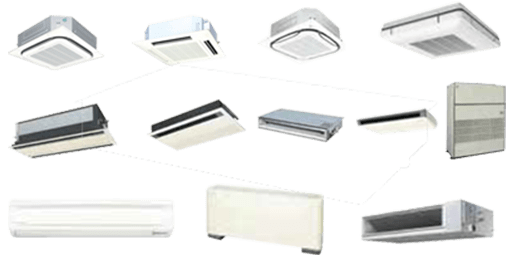
Figure 14: Collections of Daikin VRV indoor air conditioner units.
Daikin central air conditioner usually fit well with concealed ceiling decorated with partial sheetrock. It means that its indoor units can integrate well with the decoration without affecting the appearance, giving customers a great freedom in house design.
4.3 Mitsubishi

Figure 15: Collection of Mitsubishi central air conditioner indoor units.
When you are about to install Mitsubishi central air conditioner, you must make it in line with your decoration. Since the installation needs to be carried out with water and electricity work at the same time, your air conditioning personnel should negotiate with water and electricity workers to facilitate the smooth development of each work.
If there are light belts in your house design, you should pay attention to avoid it for the places of outlets of Mitsubishi central air conditioner. Avoid light belts in these places can not only improve the air conditioning effect, but also save you some decoration costs.
The crown moulding is usually installed around the ceiling, which may affect the air outlet space. Although it has a certain decorative effect, it will cover part of the air outlet, resulting in reduced air volume and noise. So try not to install crown moulding, at least not near the outlets of air conditioner.
The drainage pipe of Mitsubishi central air conditioner should be placed in outdoor as far as possible, so that the water can be discharged smoothly. However, it can also be installed indoors, which can reduce the occurrence of indoor water leakage. In either way, you should reserve a special floor drain.
4.4 Carrier
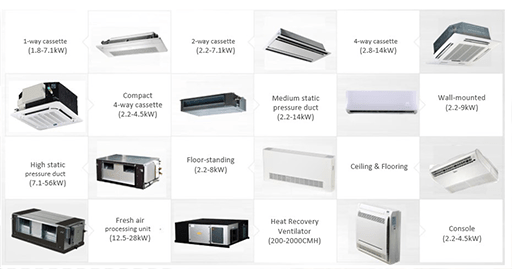
Figure 16: Collection of Carrier central air conditioner indoor units.
In terms of piping, the connecting pipes of Carrier central air conditioner can be as long as 400 meters, and the height difference can be 100 meters. Besides, it can be adjusted according to the actual installation, so as to meet complicated installation of long piping and large height difference. The installation of Carrier central air conditioner brings great convenience, which allows for more agile and free decoration design.
Here’s the PROs of Carrier installation:
* Compact equipment space.
* Easy to arrange piping and wiring connections.
* Units are equipped with valve controllers assembled in Carrier’s own factory.
* All Carrier devices are integral units, including heating kit of main pipes for liquid circulation.
4.5 Installation Summary
Thickness of indoor units of most central air conditioners is about 230mm (0.23m), and the height of most ceilings is about 300cm (3m). Therefore, after the installation of the central air conditioner, the net height of the house will not be greatly affected.
Now most houses are frame structured, and the beam height is about 400mm. If you calculate the beam height in to consider the ceiling decoration, basically the installation of central air conditioner will not reduce the floor height.
Or if the height of the building is really low, you can consider partial ceiling decoration or extra thin central air conditioner.
Samsung central air conditioner introduces a model of one-way air flow indoor unit, whose thickness is only 135mm and can be embedded in the ceiling. The model only requires 155mm ceiling height for installation. Choosing such a central air conditioner will not reduce the floor height at all.
The height of indoor units are closely related with ceiling decoration, and it’s also relevant with the techniques of the air conditioning installation company.
In the installation process, if the workers can arrange pipes and adjust drainage slopes to make the pipes close to the wall as much as possible, they can also reduce the thickness of the ceiling sheetrock, so as not to affect the house appearance and reduce the indoor height.
5. Price
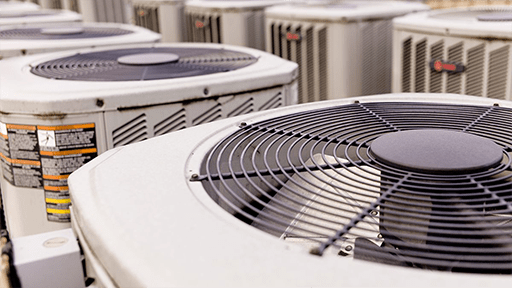
Figure 17: A series of central air conditioners installed on the rooftop.
Of course brand is important when you decide to purchase a central air conditioner. A brand name stands for the company’s product quality, after-sales and other issues. But you can not simply rely on the brand, because many of the current installation modes of household central air conditioners are not direct, that is, the manufacturer is not responsible for the installation, and they are all installed by offline agents / dealers' own workers or by outsourcing teams. The installation quality and techniques vary considerably.
So when choosing a central air conditioner, brand is very important, but it is not the only standard.
First of all, you should make clear the purpose and budget of the purchase and installation of central air conditioner.
Second, you should select a good air conditioning company. It’s better be an integrated company responsible for a whole service cycle of selling, installation and maintenance. In this way, the equipment and installation are in the hand of one company, so that your service quality can be guaranteed more.
Finally, you can request a project proposal from the air conditioning company according to your house structure, house type, family members' habits and so on.
Here, you don't need to doubt that the installation of central air conditioner absolutely needs a complete house design by the seller. A good air conditioning design can better meet the needs of use, and it may also save you a lot of unnecessary costs, for example, certain decoration plans that are impossible to realize.
So, to sum up, different from simple split air conditioners, the price composition of central air conditioners is very complicated, including the cost of machinery, installation and auxiliary materials and possible after-sale maintenance for years.
For the detailed price composition of central air conditioners, please read our another article here.
How Much is a Central Air Conditioner - Prices of Different Types of Central Air Conditioners
For air conditioner suppliers and air conditioner repair workshops, we provide a full selection of Trane, Mitsubishi, Daikin and Carrier compressors at favorable price.
Trane Compressor
Mitsubishi Compressor
Daikin Compressor
Carrier Compressor


